By Jona Bagayawa
A house should be one’s safe haven. It is supposed to be a sanctuary, a comfortable place that provides security especially during difficult times.
But to areas where there’s a frequent occurrence of strong typhoons like Bicol Region, it’s a different story.
During typhoons, many Bicolanos are forced to flee their houses and evacuate to a safer place.
In December 2020, Super typhoon Rolly hit the region leaving many Bicolanos homeless.
This constant scenario happening whenever a strong typhoon happens inspired Gil Bien, a Bicolano Industrial Designer from Malilipot, Albay, to build a prototype house called “cuboid”.

“Palaging [kaming] binabagyo pero parang ‘di nagbabago ang solusyon. [Nag-isip kami ng] porma ng bahay na iiwas or ‘di apektado ng bagyo. [Inisip namin kung] paano maiimprove [ang bahay] na ‘di compromised ang design pero able siya [to] magwithstand ng malakas na bagyo,” told Bien in an interview.
(We were always hit by typhoon and the solution never changes. We think of a form of house that will not be affected by typhoon. We think of how we can improve the house without compromising its design and at the same time are able to withstand against strong typhoon.)
Before coming up with his cuboid house design, Bien had multiple experiments. He studied the wind direction of a typhoon to find out which part of the house is primarily affected during its onslaught.

“Yung effect ng hangin sa flat surface against sa nakaconcave na surface ‘yung [inaral] ko. ‘Yung pagtama pala ng hangin doon sa naka-curve hinahanap niya iyong lusutan niya so hindi masyado malakas yung stress sa wall [kaya] ganyan po lumabas yung design ko,” said Bien.
(I studied the effect of the wind on flat surface against concave surface. I found out that when the wind hit the curve surface, it finds its way out so the effect on the wall is not that strong.)
After the experiment, Bien started conceptualizing the design of a cuboid or a cornerless house. He then started making a model of the design which now stands in Malilipot, Albay. He used high quality materials and removed the gutter in the roof.

Bien was able to build two types of cuboid which have been patented.
Alexander is the basic model which measures 48 square meters. It is a studio-type which has its own bathroom and can be remodeled as the owner wishes.

Brianna which is the premium type and measures 36 squares meters has 2 rooms, 1 bathroom, living room and kitchen.

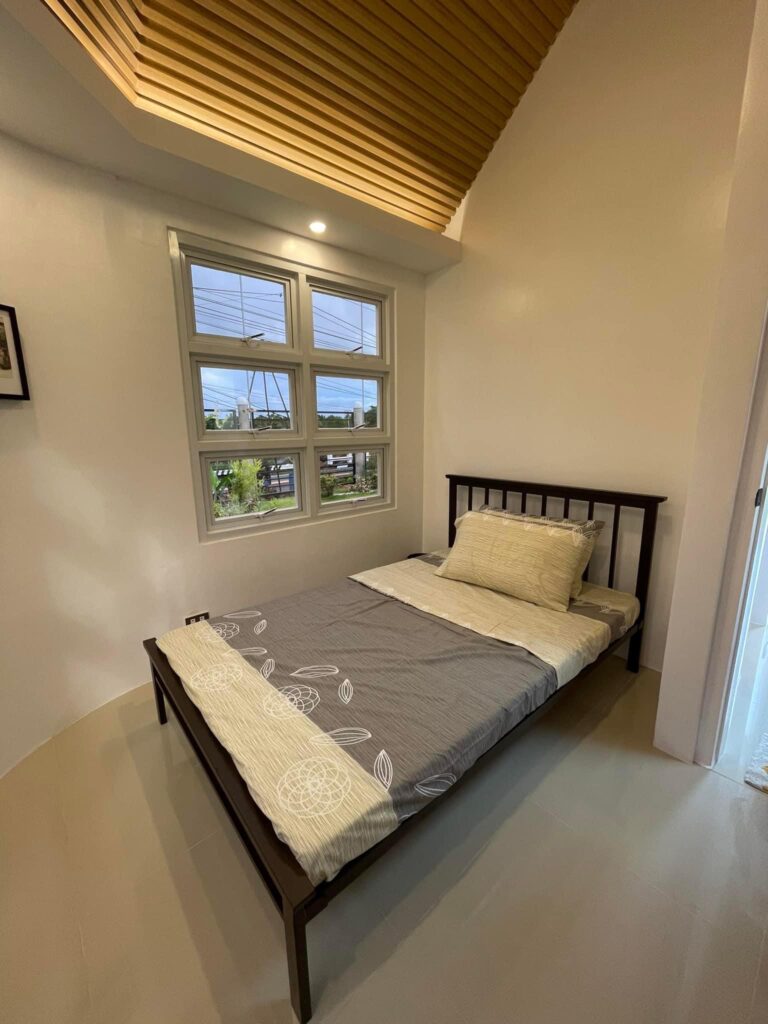
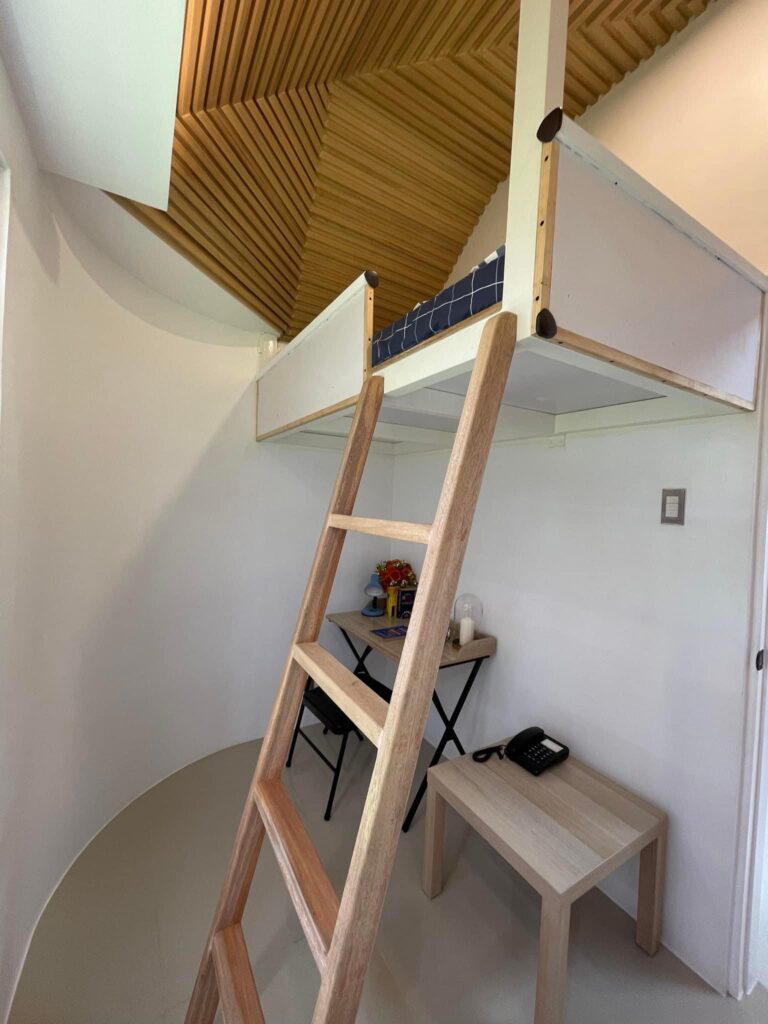
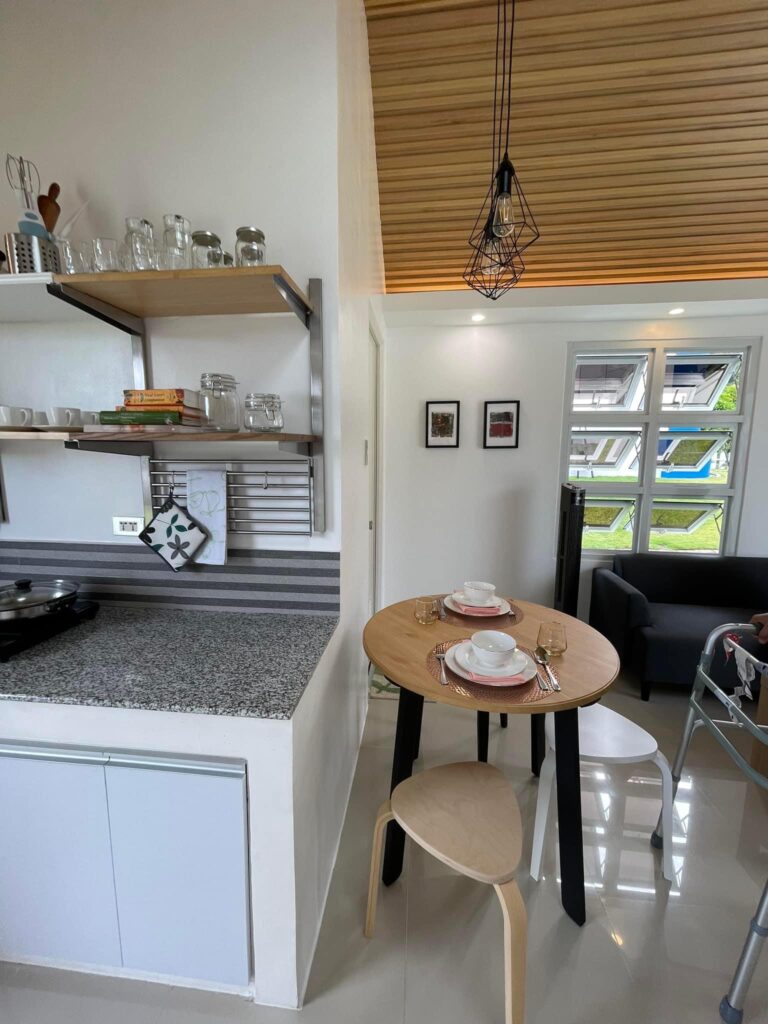

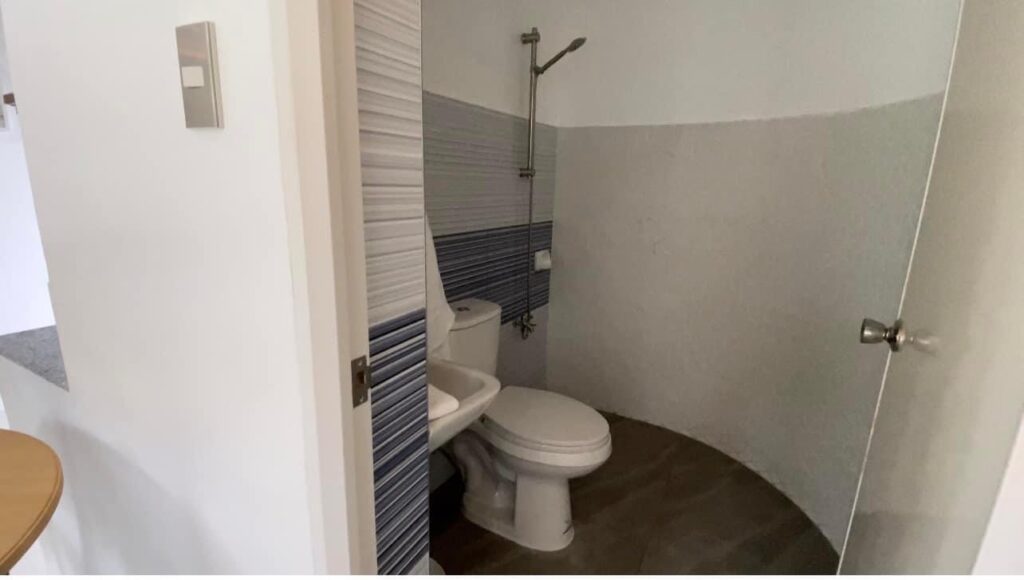
Cuboid’s Typhoon-resilience
According to Engr. Joshua Agar, Wind Engineer and UP Assistant Professor, official records show Bicol region particularly the eastern seaboard of Luzon is most exposed to higher wind compared to the rest of the Philippines.
Bien mentioned that his primary goal in designing the cuboid is to have a house that can withstand typhoons.
“Na conceptualize ko ‘tong [cuboid], nung naghahanap ako ng form [ng bahay] na pwedeng mag withstand sa bagyo. [I found out na ng pinaka-exact design ay] pabilog talaga. So ang ginawa ko po na isang square hinati ko sya sa apat. Pagkahati ko, pinaghiwa-hiwalay ko sya. Naglagay ako ng wall so same din yung effect, nung pinadaan ko sya sa wind tunnel test na achieve ko yung gusto kong mangyare. Ang effect [ng hangin sa wall ay] parang aerodynamic parin kahit na may flat space ako pero dahil yung edge nya is contoured na, [meaning ay] bilog na so dun na lumalabas yung hangin,” said Bien.
(I conceptualized this cuboid when I was looking for a form of house that can withstand typhoon. I found out that the most accurate design is round-shaped. I did a square that I divided into four. After I divided it, I separated it. I put up a wall and when I used wind tunnel test to it, I achieved what I wanted to happen. The effect of the wind on the wall is aerodynamic. Although there’s a flat surface on the wall but because its’ edge is contoured, meaning it is round-shaped, the wind passed through it.)
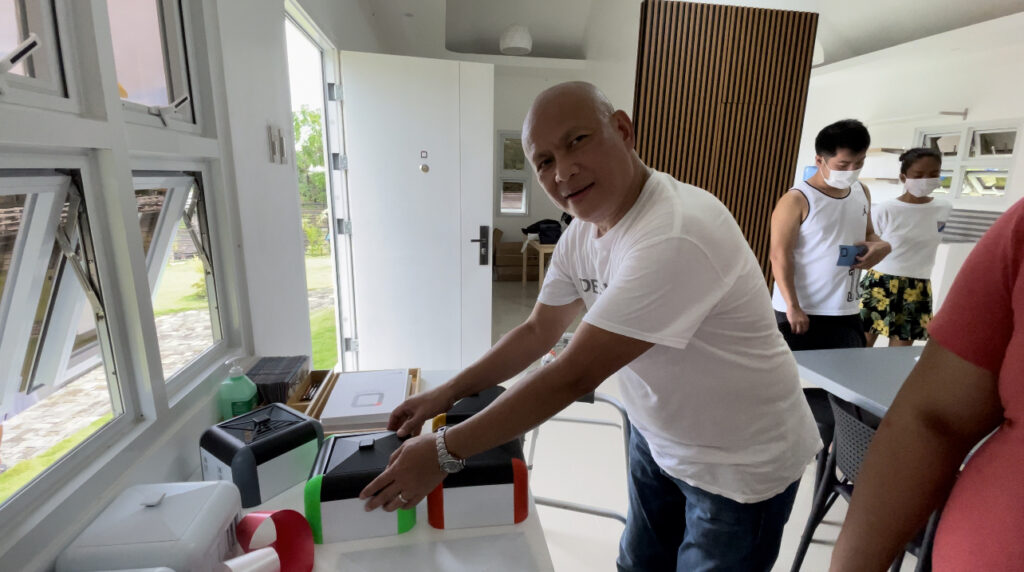
Engr. Agar furthered that the corners of a house generate vortices that causes more suction pressure of the wind resulting to the upward pulling and removal of the roof whilst having curves instead of corners lessen the magnitude of vortices.
“So pag mas kwadrado po ‘yung edge [ng bahay] mas malakas po yung suction dun sa kabila, pero dahil ginawa nyang pa curved somehow ni-lessen nya yung magnitude ng mga vortices na ‘yun, therefore nagkaroon po ng reduction ng aerodynamic forces,” said Engr. Agar.
(If the edge of a house is square type, the suction is stronger but because he made it curved, somehow it lessens the magnitude of vortices, therefore there’s a reduction of aerodynamic forces.)
Engr. Agar lauded Bien’s cuboid project and lamented this is a good start-up and initiative for houses to be hazard-resilient.

Cuboid’s Potentials: What’s next?
Bien admitted the cuboid is costly compared to the usual houses. Cuboid house costs from 1.4 million to 3 million. But he added it is a wise investment in the long run even for ordinary people who constantly experience damages in their houses during typhoons.
He also said that there’s a two-story and longer version of cuboid that can be introduced. The two-story cuboid is applicable to families who are large in number while the longer version can be adopted as designs of schools.
“Palagi po kasi kapag may bagyo may natutuklap ang bubong ng [mga paaralan] so nahihirapan ang mga teacher magpatuyo ng mga libro. So itong [cuboid design] applicable din sa school [building]. Babaguhin lang ang porma ng window then papahabain lang ng konte then school na po sya. Pwede rin po ito sa clinic at hospital,” told Bien.
(During typhoon, the roofs of the schools gets blown away and the teachers need to dry up the books. This cuboid is also applicable to school buildings. The window design will be adjusted and will expand the length of the building. Cuboid design is also applicable to clinics and hospitals.)
Aside from the design, Bien also greatly considers the place where a cuboid structure will be built.
“Kinoconsider din po natin ‘yung mga lugar na pagtatayuan [ng cuboid]. ‘Yung nga bahain na lugar ‘di po talaga pwede pero kung meron na ibang tao na may sentimental value sa kanila ang lugar magagawan naman ng paraan kaya lang tataas din yung presyo,” said Bien.
(I also consider the place where cuboid will be built. Cuboid cannot be constructed on flashflood prone areas but if a certain place has a sentimental value to the client, we can make ways but the cost will also increase.)
Bien mentioned that cuboid design houses can help lessen the relocation of people and government officials can also be confident that hazards related to house destruction will be avoided during typhoons.
“Yung dream ko talaga na ganito [cuboid] ang bahay sa Pilipinas. Gusto ko ‘yung maka acquire ng ganitong bahay masayang pamilya tsaka worry free,” told Bien.
(I dream for the houses in the Philippines to be of cuboid design. I want the families with this house to be happy and worry-free.)
